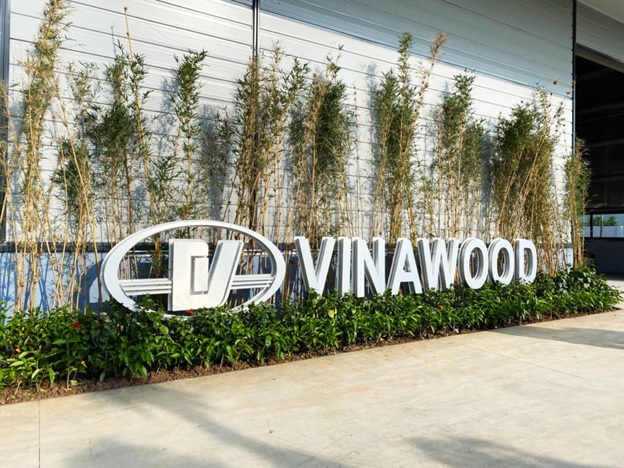Are you in search of trustworthy plywood suppliers for your next business or project? Discover the top 8 Canada plywood manufacturers from Canada as well as the USA that are renowned for their quality, innovation and sustainable. The reputable wood producers can offer you high-performance plywood suitable for construction or furniture uses.
VINAWOOD
VINAWOOD Co., Ltd was founded in 1992. It has since grown into an important plywood exporter and producer located in Vietnam serving markets throughout North America, Asia, Middle East, as well as the world beyond.
VINAWOOD is a business with a track record of offering high-quality, long-lasting plywood.
There are a variety of different kinds of plywood that can be used for any purpose.
VINAWOOD is among the top plywood producers. They provide a range of products for plywood, comprising Film Faced/Formwork Plywood (also known as Formwork Plywood), MDO Plywood (Medium Density Overlay Plywood), Commercial Plywood and Furniture Plywood. The products of VINAWOOD are constructed with 100 percent A-Grade Hardwood Veneers, bonded with adhesives created by VINAWOOD. They are durable as well as moisture resistance, and a variety of applications. These are ideal for construction, industrial as well as furniture-related applications.

Quality testing in-house for the strictest quality control
VINAWOOD is renowned for its dedication to high-quality. With its cutting-edge test labs, every batch of plywood undergoes strict tests of the physical properties as well as adhesive properties. VINAWOOD’s strict quality control procedures assure that VINAWOOD is in compliance with the highest standards of international quality and offers customers high-performance products.
Global certifications & Sustainable practices
VINAWOOD has multiple certifications which include ISO 9001, FSC, CE Marking, EPA TSCA EN13986 and EUTR certification of compliance. VINAWOOD is dedicated to sustainable and environmentally-friendly sourcing as well as security regulations. The certificates are a reflection of VINAWOOD’s ethics and a forward-looking, forward-thinking approach.
Local excellence that has global influence
VINAWOOD is one of the largest suppliers of construction and plywood around the globe. 60percent of its product is sold overseas, mostly towards countries like the United States, Canada and UAE. VINAWOOD sells 60% of their products to markets that are major, such as the US, Canada and the United Arab Emirates. Another 40% of its production is sold to Vietnam. It is evident that the company can satisfy the local and international requirements with its high-quality.
VINAWOOD Quality and commitment to Service
The success of VINAWOOD has been based on a simple premise that is to provide the highest quality product available that is guaranteed to perform well and provide outstanding customer service. VINAWOOD plywood is an ideal option for every industry that involves furniture production forms, commercial uses. It is durable as well as sustainability and dependability.
Vinawood is available directly via the following phone numbers to answer any questions about partnership for technical queries, orders or partnership questions:
- Website: https://vinawoodltd.com/
- Email: info@vinawoodltd.com
- Tel: +84-83-333-2333
Columbia Forest Products
Columbia Forest Products has been providing North American hardwood plywood, cabinetry millwork, furniture and cabinetry industry since 1957. Columbia Forest Products is headquartered at Greensboro North Carolina and owned by its 100% employees, is renowned for its PureBond (r) technique which makes use of soy-based glues in order to create more sustainable, eco-friendly plywood.
Columbia is home to multiple factories across Columbia has multiple plants in the U.S., Canada and Mexico. Columbia offers a range of wood species and wood cores as well as customized finishes to meet the different needs of customers. Columbia is committed to responsible forests and sustainable management. Columbia is a certified company with FSC certification and is a leader in the way in eco-friendly manufacturing. Columbia is the most popular choice for consumers in North America for its commitment to quality, innovation and ecological responsibility.
Forest Plywood
Forest Plywood has been a supplier of hardwood plywood as well as special panels in Southern California since 1967. Forest Plywood has offices located in La Mirada, National City and also offers hardwood plywood Baltic Birch, MDF and laminates, as well as customized milling that meets the demands of contractors and furniture manufacturers.
Forest Plywood ships selected products throughout the United States and also local delivery to Santa Barbara and San Diego. Forest Plywood, a woodworking and construction company within the San Diego region is renowned as a reliable supplier of high-quality products and prompt service, and professional help.
Georgia-Pacific
Georgia-Pacific is a major producer of wood products across North America, includes plywood, OSB, and lumber. It caters to the residential and commercial construction markets. Georgia-Pacific is renowned for its reputable brand names like Plytanium (r), DryMax (r) as well as ForceField. It has multiple manufacturing plants across Europe, the U.S., Canada and Europe. It offers high-performance products for flooring, roofing, and sheathing applications.
Georgia-Pacific company, which is focused on sustainability and innovation, uses wood in a responsible manner. The company also adheres to LEED(r) green building guidelines. Georgia-Pacific is constantly improving its capabilities in manufacturing to meet the growing demand for environmentally friendly and durable wood products. It is an excellent supplier for contractors and builders across the nation.
Canfor
Canfor, a forest products company headquartered in Vancouver in Canada is renowned for its premium wood as well as engineered and other products. pulp. Canfor operates across Canada, Europe and the United States. They supply various industries, including packaging, industrial and other products, commercial and residential construction, and construction. Canfor is known for its commitment to quality in its products, the efficiency of processes, and products which are geared towards the needs of customers.
Canfor is dedicated to sustainable management of forests and forest certification. The majority of its forests have been certified in accordance with accepted guidelines. The company maximizes each tree component that results in lumber, bioenergy, paper and other items that add worth, all while adhering to processes that are low carbon in their production. Canfor is an industry leader in sustainability and quality, environmental sustainability as well as innovation. It is a trusted partner by manufacturers, builders and distribution companies around the globe.
Royal Plywood
Royal Plywood has been a supplier of speciality panels across the Western United States for over fifty years. Royal Plywood has multiple locations across California, Nevada and Arizona. They provide a range of items, such as softwood and hardwood laminates, melamine and Melamine. Royal Plywood is known for its commitment to quality, sustainability and quick delivery. It is now an ideal partner for architects, designers and woodworkers.
Royal Plywood offers custom lamination and milling services that assist customers in creating custom solutions to their architectural, furniture and cabinetry designs. Royal Plywood, with its emphasis on innovation and design and environmental stewardship is an established supplier of design and manufacturing for commercial construction, building and construction industries over the past six decades.
Anderson Plywood
Anderson Plywood has been a prominent provider of lumber and plywood in softwoods and hardwoods and hardware, tools and milling services to the woodworking sector since 1946. The business, which is based within Culver, California, is known for its wide selection of woodworking materials as well as amateurs. It also offers specialty woodworking materials, such as veneers, and plywood items.
Anderson Plywood, which has more than 70 years of experience, is known as a business that offers outstanding customer service and mills precisely. Anderson Plywood is equipped with the knowledge and the materials needed to help customers bring their concepts to life, regardless of whether it’s making cabinets, furniture, or any other woodworking project that requires a custom.
Richwood Industries
Richwood Industries is located in Grand Rapids Michigan and it’s an importer and manufacturer of speciality panels, composites, and plywood. Richwood Industries was established in 1988, and has since earned an enviable reputation for being a top producer of cutting-edge products, such as PolyBak (r) which is an ultra-high-performance linerboard. The company also provides an array of markerboards, tackable products and custom drawers. Healthcare, office furniture as well as education are just a few of the sectors that Richwood supports.
Richwood Industries, a state-of modern manufacturing facility, is focused on customizing services and products. This includes drawer manufacturing as well as lamination, delivery and within a specified time. Richwood Industries is renowned for its commitment to providing customers with satisfaction and high-quality. They also offer custom-designed solutions to meet the demands of designers and manufacturers throughout all across the United States.
Your project’s success will be influenced when you select the most suitable manufacturer of plywood. The top plywood manufacturers of Canada and the USA and Canada concentrate not just on the quality of their products, but also on innovation and support. They will make sure that you get top-quality plywood whether purchasing for construction or furniture. Explore their offerings and build confidently.










